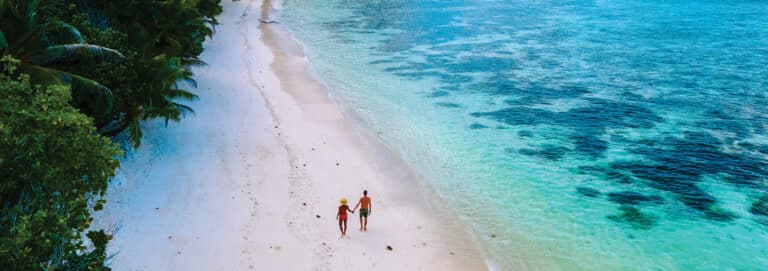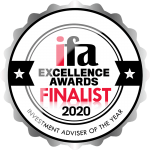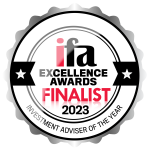As Australia’s system of compulsory superannuation celebrated its 30th anniversary in July, this is a good time to take a closer look at one of super’s biggest success stories – the number of people deciding to take control of their retirement savings with a self-managed super fund (SMSF).
There are now almost 607,000 SMSFs worth a combined $894 million, with 1.1 million members.
So as we mark this important milestone, let’s take a look at the SMSF sector and how trustees are investing their savings.
Trustees are getting younger
According to the 2022 Vanguard/Investment Trends SMSF Report, there has been jump in number of SMSFs established over the past two years, driven by younger investors taking a greater interest in their super.i
The average age at establishment is now 46, down from 50 between 2015 and 2019, with the average starting balance now $340,000, down from $440,000.ii
While one of the benefits of running your own fund is the flexibility to chart your own course, concerns have been raised over the years that SMSFs are too heavily invested in cash and shares and not as well diversified as large public funds. The latest figures show these concerns are largely unfounded.
Comparing SMSFs and large funds
SMSF administrator, SuperConcepts recently surveyed 4,500 funds to find out how SMSF trustees invest and identify any emerging trends.iii They also wanted to see how SMSFs compare with large APRA-regulated funds including – industry, retail, public sector and corporate funds – in terms of their investments.
The table below shows the overall asset breakdown as at 31 March 2022.
| Asset type | SMSF % | APRA fund % |
| Cash and short-term deposits | 12.2 | 9.1 |
| Australian fixed interest | 8.4 | 10.0 |
| International fixed interest | 2.1 | 7.9 |
| Australian shares | 40.0 | 28.5 |
| International shares | 16.4 | 27.0 |
| Property | 16.0 | 8.5 |
| Other (incl. infrastructure, cryptocurrency, commodities and collectables) | 4.9 | 9.0 |
| Total | 100 | 100 |
Source: SuperConcepts
Several differences stand out:
-
- SMSFs have a higher level of cash and short-term deposits, although not massively so.
-
- SMSFs hold more Australian shares and property
-
- APRA funds hold more international shares and fixed interest, and more alternative assets.
At first glance, these differences conform to the stereotype of SMSFs being too dependent on cash, Australian shares and property.
However, the preference for cash may come down to a higher proportion of SMSF members in pension phase (45% of SMSFs are partly or fully in pension phase according to the ATO). The more members a fund has in pension phase, the more cash and liquid investments it needs to cover benefit payments.
Also, the differences are not so stark when you group assets. For instance, cash and fixed interest combined amount to 22.7 percent for SMSFs and 27.0 % for APRA funds. Similarly, local and international shares (56.4 % for SMSFs, 55.5 % for APRA funds) and property and other (20.9 % vs 17.5 % ).
It’s likely that the differences within these broad asset groupings are driven by access to different markets, and SMSF trustees being more comfortable picking investments they know such as local shares and property.
What’s more, while big funds can invest directly in large infrastructure projects with steady capital appreciation and reliable income streams, both in Australia and overseas, SMSF investors may be pursuing a similar strategy but with real property instead.
Top 10 SMSF investments
Whether it’s the familiarity factor or ease of access, the top 10 investments by value held by SMSFs in the SuperConcepts survey were all Australian shares. Not a single managed fund or exchange-traded fund (ETF) made the top 10 by dollars invested – they first appear in fifteenth place.
As you might expect, the major banks dominate the top 10, along with market heavyweights BHP, CSL and Telstra.
Another thing the top 10 have in common, apart from being household names and easy to access, is dividends. Just as SMSFs in retirement phase hold higher levels of cash to fund their daily income needs, high dividend paying shares are prized for their regular income stream.
Despite a concentration of shares in the bank sector, SMSF investors do achieve some level of diversification within their share portfolios.
The Investment Trends report found trustees aged 45-54 held shares in an average of 13 listed companies, while those aged 55-64 held an average of 14 shares and trustees aged 65-plus held an average of 19.iv
Use of ETFs and managed funds
While SMSFs hold large sums in direct Australian shares, diversification improves markedly when you add investments in Australian and international shares held via ETFs and managed funds.
The SuperConcepts survey found almost one third of SMSF investments by value are held in pooled investments. The highest usage is for international shares and fixed interest, where 75 % of exposure is via ETFs and managed funds.
As it’s still relatively difficult to access direct investments in international shares, it’s not surprising that global share funds account for eight of the top 10 ETFs and managed funds.
This latest research shows that the diversification of SMSF investment portfolios is broadly comparable to the big super funds. After 30 years of growth and a new generation taking control of their investments, the SMSF sector has well and truly come of age.
If you would like to discuss your SMSF’s investment strategy or you are thinking of setting up your own fund, give us a call.
i https://www.vanguard.com.au/media-centre/articles/younger-generation-leading-SMSF-spike
ii https://smsmagazine.com.au/news/2022/06/15/younger-trustees-driving-smsf-establishments/





































































